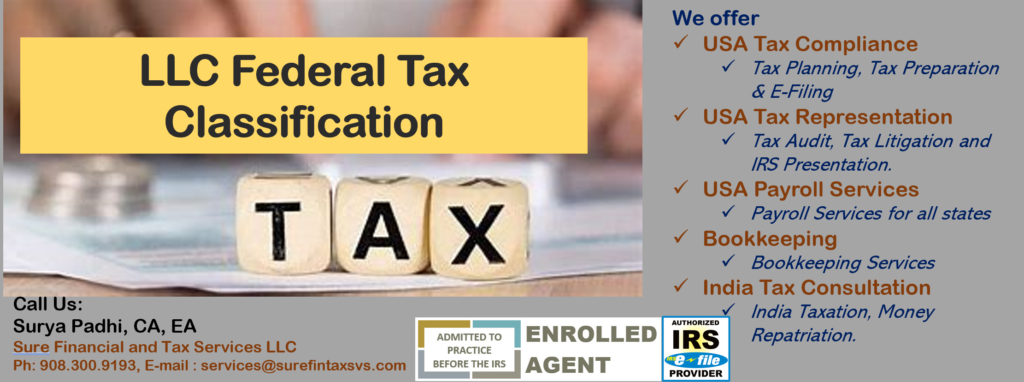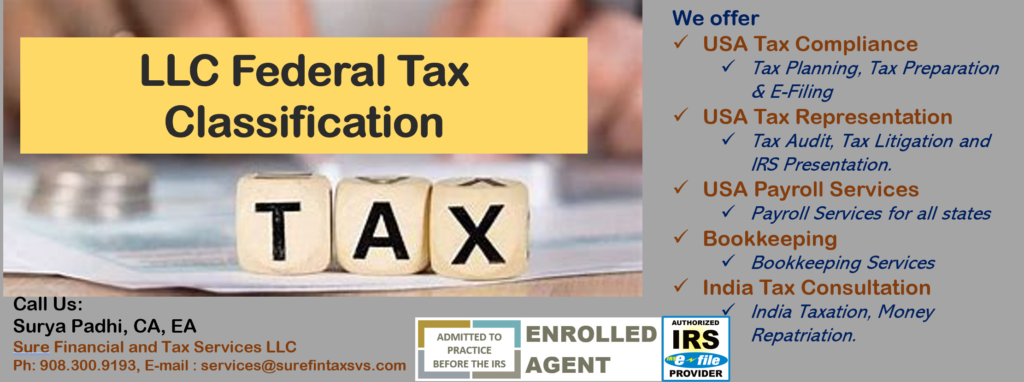

LLC Federal Tax Classifications are the rules that determine how the IRS treats a Limited Liability Company (LLC) for federal income tax purposes. An LLC is a business entity that is created by state law and has some features of both a corporation and a partnership. An LLC can choose from different tax classifications depending on the number of members (owners) and the preferences of the members. Here are some key points about LLC Federal Tax Classifications:
- Default classifications: An LLC with only one member is automatically classified as a disregarded entity, which means the member reports the income and expenses of the LLC on his or her own personal tax return. An LLC with two or more members is automatically classified as a partnership, which means the LLC files a separate tax return (Form 1065) and each member reports their share of the LLC’s income and deductions on their personal tax return (Schedule K-1).
- Elective classifications: An LLC can also elect to be classified as a corporation by filing Form 8832, Entity Classification Election. A corporation files its own tax return (Form 1120 or 1120-S) and pays tax at the corporate level. The members of the LLC may also have to pay tax on their distributions or dividends from the corporation. This is known as double taxation. Alternatively, an LLC can elect to be classified as an S corporation, which is a special type of corporation that avoids double taxation by passing through its income and losses to its members. To elect S corporation status, an LLC must meet certain requirements and file Form 2553, Election by a Small Business Corporation.
- Advantages and disadvantages: The choice of tax classification for an LLC depends on various factors, such as the number and type of members, the nature and amount of income, the level of liability protection, the flexibility of management and ownership, and the future plans for the business. Each classification has its own advantages and disadvantages that should be carefully weighed before making a decision. For example, some advantages of being taxed as a partnership or a disregarded entity are: simplicity, flexibility, lower tax rates, and no double taxation. Some disadvantages are: self-employment taxes, limited liability protection, and less credibility. Some advantages of being taxed as a corporation or an S corporation are: limited liability protection, credibility, lower self-employment taxes, and potential tax savings. Some disadvantages are: complexity, double taxation, higher tax rates, and more restrictions.
